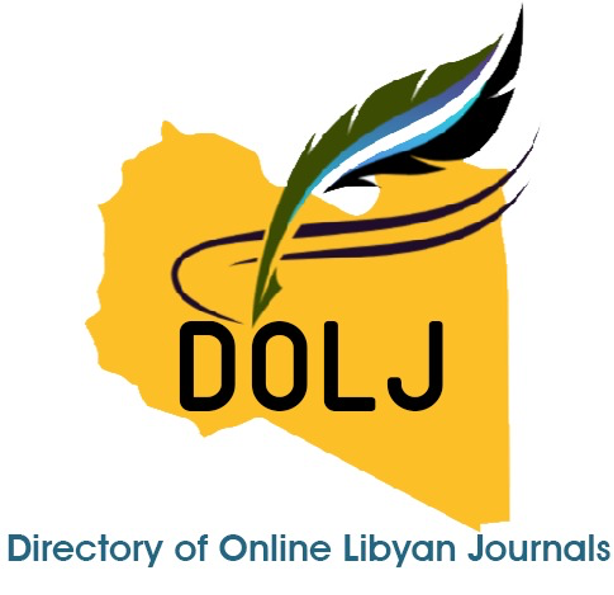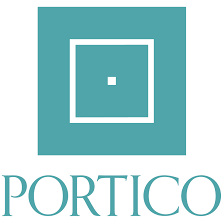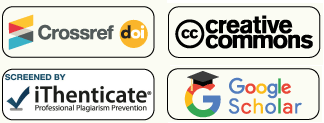- Editorial Policy
- Publication Policy
- Peer Review Policy
- Copyright and Licensing
- Open Accesses Policy
- Publication Fees and Charges
- Plagiarism Policy
- Data Sharing Policy
About the Journal
Vision
Publishing original, high-quality, peer-reviewed research according to distinguished global professional standards in basic and applied sciences. The aim is to disseminate high-quality scientific research that serves scientists and researchers to promote societal well-being.
Mission
The journal strives to become a scientific reference for researchers by publishing peer-reviewed research according to distinguished global professional standards in basic and applied sciences. This is achieved by publishing high-quality research that benefits society.
Objectives
The main objectives that the editorial board of the Journal of Science Basic and Applied aims to achieve are:
- Developing and enriching knowledge while serving specialists and those interested in the scientific field.
- Enriching the scientific library with specialized research and studies.
- Supporting students and researchers in basic and applied sciences by providing them with a platform, a conducive environment, and the ability to publish their research, studies, abstracts, and innovations after review by specialized professors.
- Providing opportunities for university faculty members, specialists, and academics to publish their research.
- Promoting a culture of scientific research among faculty members and students.
- Contributing to supporting development plans and advancing activities across all fields by utilizing the information and findings provided by the scientific research published in the journal.
Editorial Policy
1. Fields of Publication
The journal covers all branches of basic and applied sciences and related fields, including:
- Physics
- Chemistry
- Mathematics
- Biology
- Botany
- Zoology
- Microbiology
- Genetics
- Statistics
- Environment
- Medical Physics
- Earth Sciences
2. Publication Requirements
- The research must be original and not previously published or submitted for publication elsewhere.
- Adherence to the publishing guidelines announced by the journal and recognized academic standards.
- Proper language usage and accurate documentation using the APA style.
- A summary in the research language must accompany the paper, with translations in both Arabic and English.
- Formatting according to the journal's approved template.
- Textual similarity must not exceed 20% (excluding references and properly documented citations).
3. Responsibilities of the Editorial Board
- Reviewing submitted research to ensure compliance with the journal's requirements in terms of formatting, language, and scope before initiating the peer review process.
- Selecting reviewers.
- Assigning two reviewers to each research paper.
- Monitoring the peer review process for submitted papers.
- Ensuring the integrity of the editorial process.
- Maintaining research confidentiality throughout the review process.
- Issuing the final publication decision based on peer review results.
- Informing the corresponding author about the evaluation steps and results.
Publication Policy
Intellectual Property and Copyright
- Authors retain copyright while granting the journal the right to first publication.
- The journal adheres to permissible citation limits under ethical standards.
- Authors must disclose any conflicts of interest or funding support.
Open Access
- The Journal of Science Basic and Applied published by University of Misurata, does not charge authors for publishing or accessing content.
- The journal adopts a full open-access system, allowing articles to be freely read and downloaded without restrictions.
Publishing License
- Articles are published under a Creative Commons license, allowing reuse and redistribution with proper attribution.
Reuse and Archiving Policy
- Authors may archive copies of their articles on personal or institutional websites.
- Proper attribution to the original journal publication must be provided.
Withdrawal and Corrections
- Research cannot be withdrawn after acceptance unless valid reasons are documented and approved by the Editor-in-Chief.
- If a significant error is discovered post-publication, authors must formally request correction or retraction.
Peer Review Policy
Type of Review
The journal uses a double-blind review system, ensuring the anonymity of both reviewers and authors.
Review Process
- Initial screening by the editorial board.
- Plagiarism check using reliable software (e.g., iThenticate, Turnitin) to detect methodological errors or plagiarism before review.
- Selection of reviewers based on expertise and avoidance of conflicts of interest (e.g., academic relationships with the author).
- Preliminary acceptance papers are sent to two specialized reviewers.
- Final decisions are based on reviewers' reports, with a third review requested if there is a conflict.
Evaluation Criteria
- Research originality and significance.
- Clarity of the problem statement and objective formulation.
- Theoretical and methodological framework.
- Analysis, discussion, and findings.
- Documentation, language, and academic presentation.
Review Timeline
- Initial response: within 10 days.
- Peer review: 30–45 days from the date of assignment.
Possible Review Outcomes
- Acceptance as-is.
- Acceptance with minor revisions.
- Acceptance after major revisions.
- Rejection.
Direct Rejection Criteria
- Weak methodology or scientific plagiarism.
- Topics outside the journal's scope.
- Exceeding the approved similarity threshold.
Plagiarism Policy
Definition
The journal defines plagiarism as using others' texts, ideas, data, or results without proper attribution, including:
- Direct copying without quotation.
- Paraphrasing without citation.
- Undisclosed self-plagiarism.
- Translating material from another language without citing the source.
Detection Tools
The journal uses reliable plagiarism detection tools such as iThenticate or Turnitin, with a maximum allowable similarity of 20% (excluding references and documented citations).
Actions in Case of Plagiarism
- Before Peer Review: Immediate rejection if plagiarism is confirmed.
- During Peer Review: Review is halted, and the case is referred to the editorial board.
- After Publication: Retraction announcement and notification to the relevant academic or funding institutions.
Penalties
- Rejection of the paper with official notification to the author.
- A minimum two-year ban on publishing with the journal.
- Permanent ban for repeated offenses.
Data Sharing Policy
Principle
The journal encourages transparency and data sharing in line with research ethics and academic standards.
Author Responsibilities
- Provide data (statistical, qualitative, study tools) upon request for verification or academic purposes.
- Indicate whether the data is publicly available, available upon request, or subject to restrictions (confidentiality, institutional, or legal).
Article Declaration
Authors must include a "Data Availability Statement" in their papers, specifying access and availability details.
Publication Ethics
Ethical Standards
The journal adheres to the principles of the Committee on Publication Ethics (COPE) and requires compliance from authors, editors, and reviewers.
Responsibilities
- Authors: Submit original, unpublished work; disclose conflicts of interest; and obtain necessary ethical approvals.
- Reviewers: Maintain confidentiality, provide objective evaluations, and meet deadlines.
- Editorial Board: Ensure fairness, investigate ethical complaints, and maintain the integrity of the editorial process.
Handling Misconduct
- Investigate any evidence of manipulation, fabrication, or plagiarism.
- Apply escalating actions (warning, rejection, retraction, or banning).
Readers and researchers can report ethical concerns using an online form available on the journal's website.










